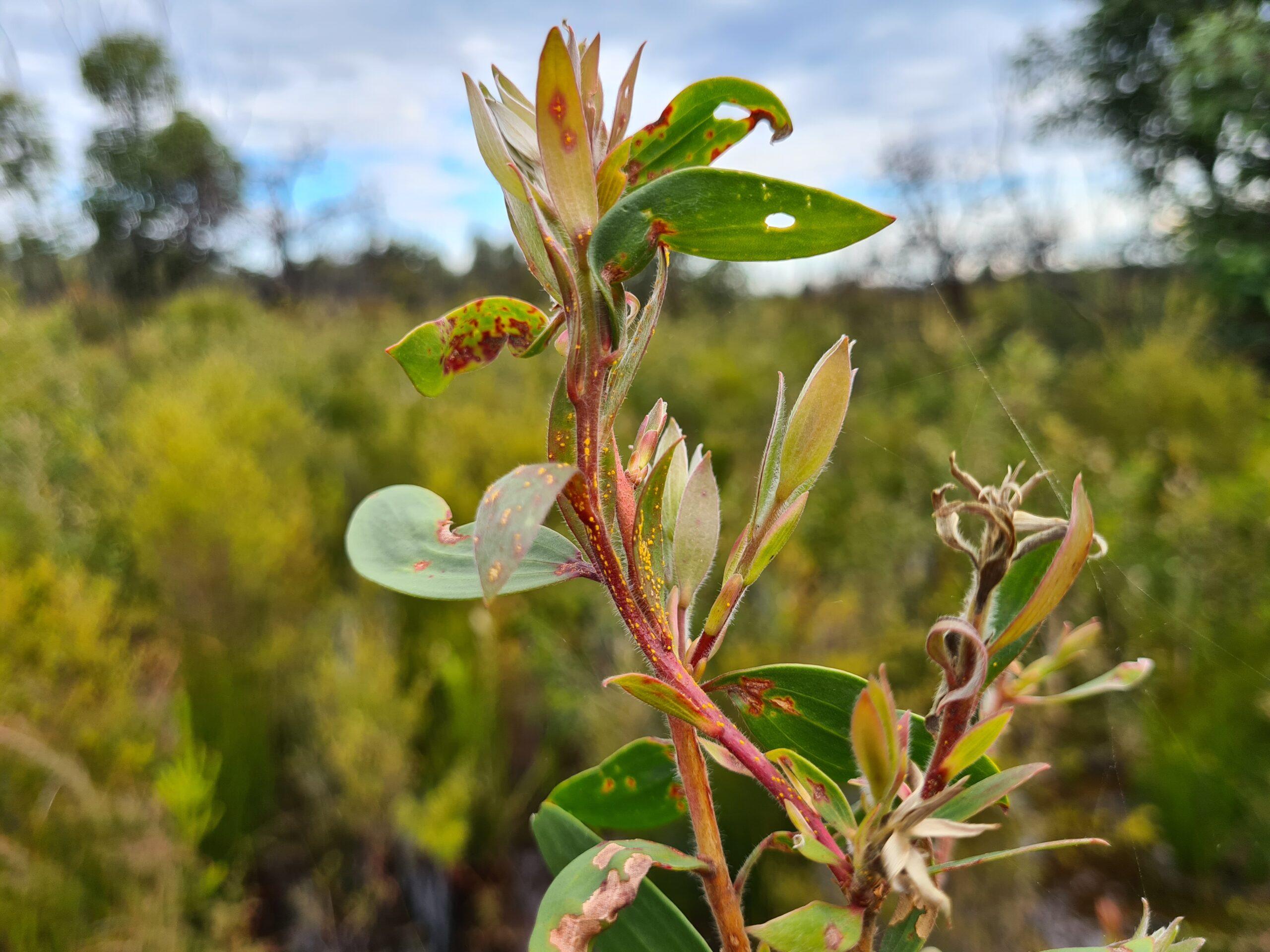Project start date: 01/10/2023
Project end date: 31/03/2026
NESP funding: $487,901 (GST-exclusive)
This research project is supporting the strategic management of the invasive disease myrtle rust in Australia’s World Heritage forests.
Myrtle rust is caused by the fungal pathogen Austropuccinia psidii and was first detected in Australia in 2010. It has spread quickly since then, with significant impacts for its host plants in the Myrtaceae family – including eucalypt, bottlebrush, paperbark, tea-tree and lilly-pilly species. Several species are now in dramatic decline.

Melaleuca quinquenervia with myrtle rust. Photo Geoff Pegg.
Most current research is focused on understanding myrtle rust’s impact on individual plant species. We’re instead focusing on understanding the characteristics of forests that make them most vulnerable to myrtle rust. These might include aspects such as fire, climate and land-management practices. We’re also investigating the consequences of entirely losing native tree and shrub species from forest ecosystems.
We want to understand forest dynamics and the ecological role that different Myrtaceae species play in different forest types to help focus future management and restoration. Our research will set the foundations for a myrtle rust susceptibility model. This model will be aimed at guiding investment and fortifying biosecurity monitoring protocols.
This project will also fund additional training programs for Indigenous rangers in myrtle rust monitoring, impact assessment and management strategies.
Key research areas
To address the challenges posed by the spread of myrtle rust and to maintain the ecosystem health of Australian World Heritage forests, this project is:
No resources found.
Project leader
The project is being led by Professor Jennifer Firn from QUT, Dr Geoff Pegg from the Qld Department of Agriculture and Fisheries and Professor Darren Crayn from James Cook University. This project will contribute to 2 cross-cutting initiatives:
Contact
For further information, contact jennifer.firn@qut.edu.au, geoff.pegg@daf.qld.gov.au, darren.crayn@jcu.edu.au or nesplandscapes@uwa.edu.au.
Research users
People